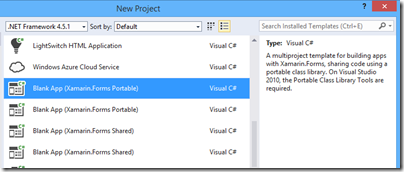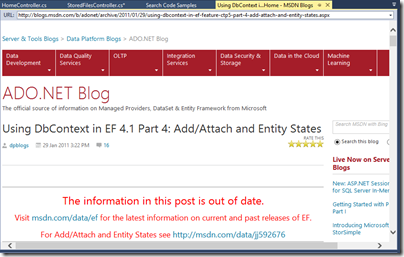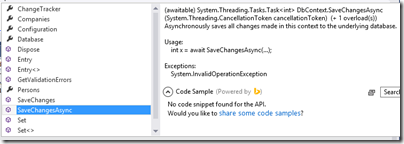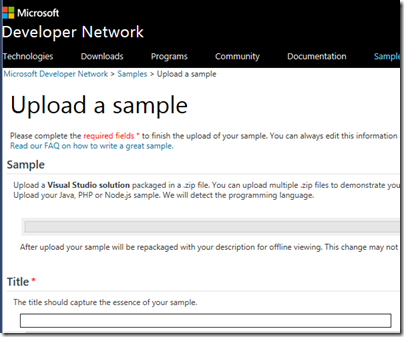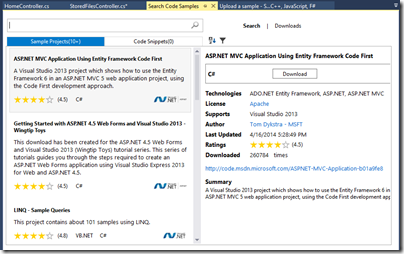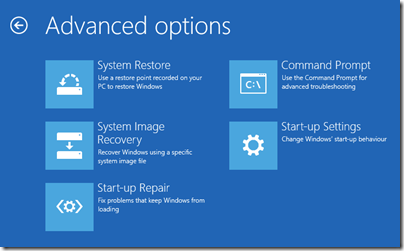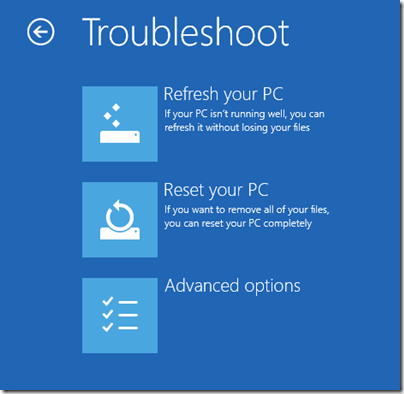I have recently completed (if applications are ever completed) an application which runs on Microsoft’s Azure platform. I used lots of Microsoft technology:
- Visual Studio 2013
- Visual Studio Online with Team Foundation version control
- ASP.NET MVC 4.0
- Entity Framework 4.0
- Azure SQL
- Azure Active Directory
- Azure Web Sites
- Azure Blob Storage
- Microsoft .NET 4.5 with C#
The good news: the app works well and performance is good. The application handles the upload and download of large files by authorised users, and replaces a previous solution using a public file sending service. We were pleased to find that the new application is a little faster for upload and download, as well as offering better control over user access and a more professional appearance.
There were some complications though. The requirement was for internal users to log in with their Office 365 (Azure Active Directory) credentials, but for external users (the company’s customers) to log in with credentials stored in a SQL Server database – in other words, hybrid authentication. It turns out you can do this reasonably seamlessly by implementing IPrincipal in a custom class to support the database login. This is largely uncharted territory though in terms of official documentation and took some effort.
Second, Microsoft’s Azure Active Directory support for custom applications is half-baked. You can create an application that supports Azure AD login in a few moments with Visual Studio, but it does not give you any access to metadata like to which security groups the user belongs. I have posted about this in more detail here. There is an API of course, but it is currently a moving target: be prepared for some hassle if you try this.
Third, while Azure Blob Storage itself seems to work well, most of the resources for developers seem to have little idea of what a large file is. Since a primary use case for cloud storage is to cover scenarios where email attachments are not good enough, it seems to me that handling large files (by which I mean multiple GB) should be considered normal rather than exceptional. By way of mitigation, the API itself has been written with large files in mind, so it all works fine once you figure it out. More on this here.
What about Visual Studio? The experience has been good overall. Once you have configured the project correctly, you can update the site on Azure simply by hitting Publish and clicking Next a few times. There is some awkwardness over configuration for local debugging versus deployment. You probably want to connect to a local SQL Server and the Azure storage emulator when debugging, and the Azure hosted versions after publishing. Visual Studio has a Web.Debug.Config and a Web.Release.Config which lets you apply a transformation to your main Web.Config when publishing – though note that these do not have any effect when you simply run your project in Release mode. The correct usage is to set Web.Config to what you want for debugging, and apply the deployment configuration in Web.Release.Config; then it all works.
The piece that caused me most grief was a setting for <wsFederation>. When a user logs in with Azure AD, they get redirected to a Microsoft site to log in, and then back to the application. Applications have to be registered in Azure AD for this to work. There is some uncertainty though about whether the reply attribute, which specifies the redirection back to the app, needs to be set explicitly or not. In practice I found that it does need to be explicit, otherwise you get redirected to the deployed site even when debugging locally – not good.
I have mixed feelings about Team Foundation version control. It works, and I like having a web-based repository for my code. On the other hand, it is slow, and Visual Studio sulks from time to time and requires you to re-enter credentials (Microsoft seems to love making you do that). If you have a less than stellar internet connection (or even a good one), Visual Studio freezes from time to time since the source control stuff is not good at working in the background. It usually unfreezes eventually.
As an experiment, I set the project to require a successful build before check-in. The idea is that you cannot check in a broken build. However, this build has to take place on the server, not locally. So you try to check in, Visual Studio says a build is required, and prompts you to initiate it. You do so, and a build is queued. Some time later (5-10 minutes) the build completes and a dialog appears behind the IDE saying that you need to reconcile changes – even if there are none. Confusing.
What about Entity Framework? I have mixed feelings here too, and have posted separately on the subject. I used code-first: just create your classes and add them to your DbContext and all the data access code is handled for you, kind-of. It makes sense to use EF in an ASP.NET MVC project since the framework expects it, though it is not compulsory. I do miss the control you get from writing your own SQL though; and found myself using the SqlQuery method on occasion to recover some of that control.
Finally, a few notes on ASP.NET MVC. I mostly like it; the separation between Razor views (essentially HTML templates into which you pour your data at runtime) and the code which implements your business logic and data access is excellent. The code can get convoluted though. Have a look at this useful piece on the ASP.NET MVC WebGrid and this remark:
grid.Column("Name",
format: @<text>@Html.ActionLink((string)item.Name,
"Details", "Product", new { id = item.ProductId }, null)</text>),
The format parameter is actually a Func, but the Razor view engine hides that from us. But you’re free to pass a Func—for example, you could use a lambda expression.
The code works fine but is it natural and intuitive? Why, for example, do you have to cast the first argument to ActionLink to a string for it to work (I can confirm that it is necessary), and would you have worked this out without help?
I also hit a problem restyling the pages generated by Visual Studio, which use the twitter Bootstrap framework. The problem is that bootstrap.css is a generated file and it does not make sense to edit it directly. Rather, you should edit some variables and use them as input to regenerate it. I came up with a solution which I posted on stackoverflow but no comments yet – perhaps this post will stimulate some, as I am not sure if I found the best approach.
My sense is that what ASP.NET MVC is largely a thing of beauty, it has left behind more casual developers who want a quick and easy way to write business applications. Put another way, the framework is somewhat challenging for newcomers and that in turn affects the breadth of its adoption.
Developing on Azure and using Azure AD makes perfect sense for businesses which are using the Microsoft platform, especially if they use Office 365, and the level of integration on offer, together with the convenience of cloud hosting and anywhere access, is outstanding. There remain some issues with the maturity of the frameworks, ever-changing libraries, and poor or confusing documentation.
Since this area is strategic for Microsoft, I suggest that it would benefit the company to work hard on pulling it all together more effectively.
